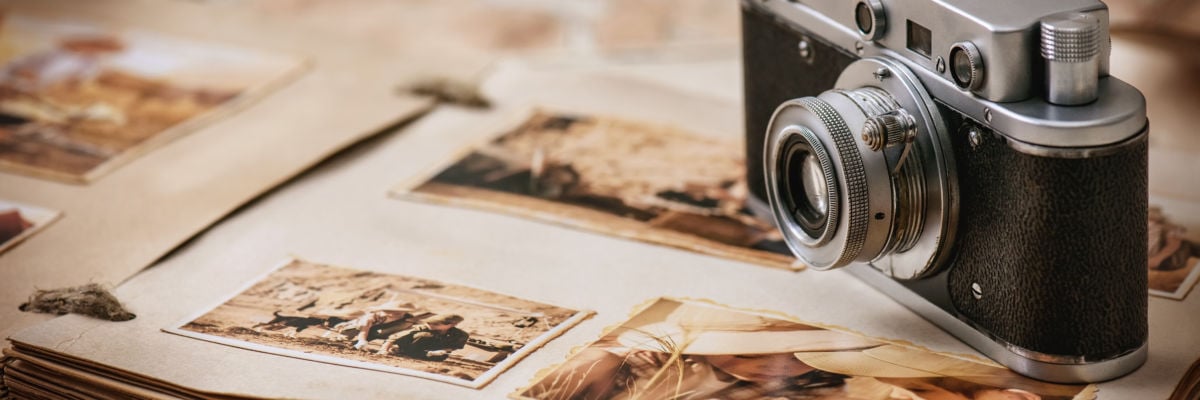
The essential elements of the Faith are immutable. The prophet Isaiah summarizes: “[My word] shall go forth from my mouth: it shall not return to me void, but it shall do whatsoever I please, and shall prosper in the things for which I sent it” (55:11). The glorious Resurrection proves that God’s word, delayed by the obstacles of our sins, fulfills God’s will.
The Creed reveals the overall chronology of human existence. The Ten Commandments direct our lives to happiness. We encounter Jesus in the sacraments. Our study of Scripture and Church teaching is like playing a game of Scrabble. We delight in the interlocking reality of the pieces of the Faith and expand the narrative with our insights. We recognize and dismiss misspellings and deliberate distortions.
The Evangelists piece together the Gospels like a photo album. Just as we see pictures of family members from childhood to maturity, we read snippets of the life of Jesus, from his birth to his passion, resurrection, and ascension into heaven. The Gospels, like a photo album, need faithful Christians pondering the word of God to fill in the details of the narrative with their life experiences.
The liturgy harmonizes the snapshot accounts of the Gospels into a living narrative. In the Sacred Triduum, the pinnacle of human history, we emerge from the three-day sacred drama with a deeper understanding of God’s eternal plan.
On Holy Thursday, Jesus presides at the Last Supper, ordains the first priests, institutes the new and everlasting covenant of the Eucharist, and proceeds to the Garden of Gethsemane where his enemies arrest him. On Good Friday, the chief priests place Jesus on trial and send him to Pilate for condemnation, and Pilate directs his soldiers to crucify him. Mary, his mother, tenderly holds the crucified body of her divine son in her arms. Nicodemus and Joseph of Arimathea prepare and bury his body.
On Easter Sunday, Jesus rises from the dead, conquering sin, suffering, and death. Jesus is the lamb of God who takes away the sins of the world. The Triduum encapsulates the entire liturgical year.
Advent prepares us for the first coming of Jesus. We rejoice in the word made flesh during the Christmas season. We continue with Ordinary Time—the public life of Jesus. We fortify our ongoing growth of faith with the saving truths revealed during Lent, Holy Week, the Sacred Triduum, and the Easter season. We resume our regular growth in the life of faith during summer. We prepare for death as the leaves fall. The concluding feast of Christ the King reminds us of his second coming. Jesus rules forever in heaven and on earth.
We see and feel the Jewish roots of the Sacred Triduum and every subsequent Mass. The tabernacle, altar, hymnody, the assembly, the “Temple,” and the elements of the Mass echo Jewish worship. The Liturgy of the Word fulfills and replaces the liturgy of the synagogue. The single sacrifice of Jesus in the Liturgy of the Eucharist fulfills and replaces the Temple sacrifices.
When Jesus died on Good Friday, the Temple curtain separating the people from the holy of holies was torn asunder. The torn curtain prefigures the removal of the chalice veil at Mass, preparing us to enter into the holy of holies of the Mass, the one sacrifice of Jesus.
The liturgy re-presents—makes present—those sacred three days. On Holy Thursday, Jesus instructs his priests, “Do this in memory of me.” On Good Friday, we may find ourselves among the chief priests, the big-talking but cowardly first priests, Mary, St. John, the holy women at the foot of the cross, and the brutal soldiers delighting in the mayhem or taking sides with the thieves flanking Jesus.
These ancient scenes, which the Scriptures and the sacred liturgy assemble into a coherent narrative, also have modern implications. We may prefer to find ourselves with Mary and the holy women at the foot of the cross. But we more likely would find ourselves in the crowd, shouting, “Crucify him!” We crucify our adversaries utilizing the same arguments we hear in the Gospel.
We feel the practical tug of Caiaphas: “You do not understand that it is expedient for you that one man should die for the people, and that the whole nation should not perish” (John 11:50). We also convince ourselves that we can do evil to achieve a greater good, with the ends justifying the means. The “Caiaphas principle” presumes to justify every evil choice in war, politics, employment, and family. But what is greater than the life of a single innocent human being?
For most of us, Pilate is a sympathetic figure. The poor man is assigned to the hellhole of the Middle East as he looks for his next—more comfortable—assignment. He nobly tries to prevent a riot. He respects Jesus and is attracted to his words. But a cynical question in dialogue with Jesus was a conversation-stopper: “What is truth?” Jesus can’t expect him to know the difference between right and wrong! So Pilate surrenders Truth Incarnate for crucifixion.
Pilate flamboyantly washes his hands to plead innocence and heal his wounded conscience. He affixes “King of the Jews” on the cross to taunt the chief priests for provoking his murder of an innocent man. But Pilate needed a savior to forgive his sins. “Wash me thoroughly from my iniquity, and cleanse me from my sin!” (Ps. 51:2).
After the Resurrection, Jesus encounters Mary Magdalene in the garden. We are all familiar with Mary Magdalene’s story. She is heartbroken and is looking for her savior. She mistakes Jesus for a gardener. The dialogue is sweet and tender, with one word expressing Jesus’ perfect love: “Mary!”
A name pronounced with love puts an exclamation point on the mission of Jesus. Jesus knows and loves us by name . . . including Caiphas and Pilate. He desires to return to the Father, with us as his friends.
Christ is risen. He is risen indeed.



